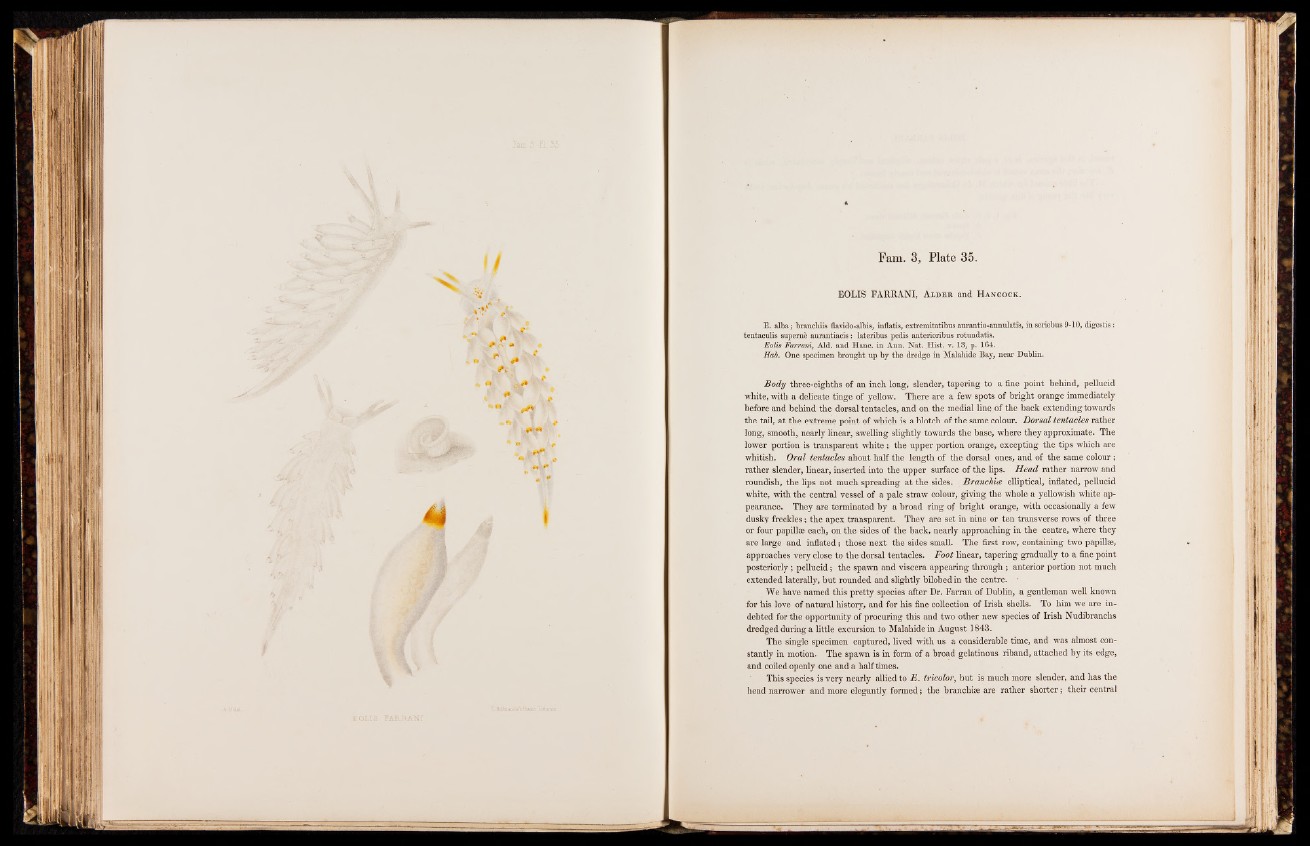
Fam. 3, Plate 35.
EOLIS FARRANI, A l d e r a n d H a n c o c k .
E. alba; branchiis flavido-albis, inflatis, extremitatibus aurantio-annulatis, in seriebus 9-10, digestis:
tentacnlis supeme aurantiacis: lateribns pedis anterioribns rotundatis.
Eolis Farrani, Aid. and Hanc. in Ann. Nat. .Hist. v. 13, p. 164.
Hab. One specimen brought up by the dredge in Malahide Bay, near Dublin.
Body three-eighths of an inch long, slender, tapering to a fine point behind, pellucid
white, with a delicate tinge of yellow. There are a few spots of bright orange immediately
before and behind the dorsal tentacles, and on the medial line of the back extending towards
the tail, at the extreme point of which is a blotch of the same colour. Dorsal tentacles rather
long, smooth, nearly linear, swelling slightly towards the base, where they approximate. The
lower portion is transparent white ; the upper portion orange, excepting the tips which are
whitish. Oral tentacles about half the length of the dorsal ones, and of the same colour ;
rather slender, linear, inserted into the upper surface of the lips. Head rather narrow and
roundish, the lips not much spreading at the sides. Branchiae elliptical, inflated, pellucid
white, with the central vessel of a pale straw colour, giving the whole a yellowish white appearance.
They are terminated by a broad ring of bright orange, with occasionally a few
dusky freckles; the apex transparent. They are set in nine or ten transverse rows of three
or four papillae each, on the sides of the back, nearly approaching in the centre, where they
are large and inflated; those next the sides small. The first row, containing two papillae,
approaches very close to the dorsal tentacles. Foot linear, tapering gradually to a fine point
posteriorly; pellucid; the spawn and viscera appearing through ; anterior portion not much
extended laterally, but rounded and slightly bilobed in the centre.
We have named this pretty species after Dr. Farran of Dublin, a gentleman well known
for his love of natural history, and for his fine collection of Irish shells. To him we are indebted
for the opportunity of procuring this and two other new species of Irish Nudibranchs
dredged during a little excursion to Malahide in August 1843.
The single specimen captured, lived with us a considerable time, and was almost constantly
in motion. The spawn is in form of a broad gelatinous riband, attached by its edge,
and coiled openly one and a halftimes.
This species is very nearly allied to E . tricolor, but is much more slender, and has the
head narrower and more elegantly formed; the branchiae are rather shorter; their central